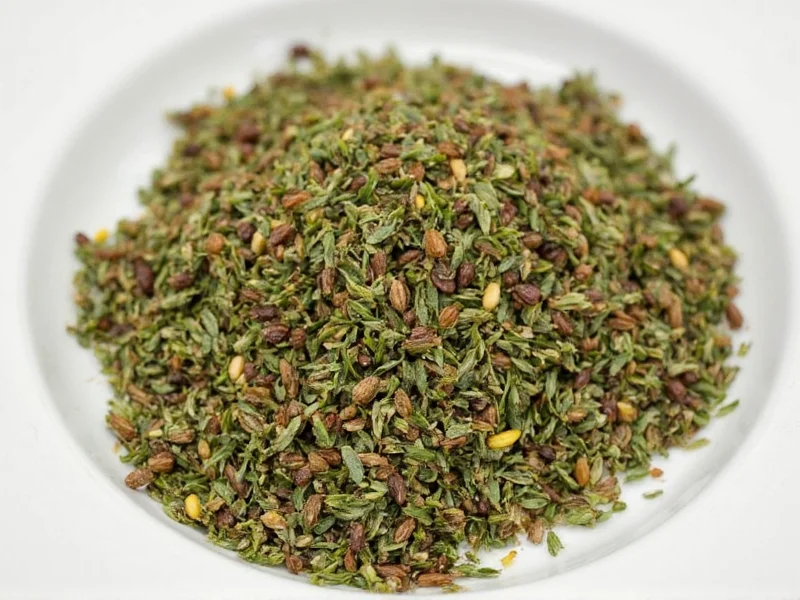When converting fresh thyme to dried in your recipes, understanding the precise measurement ratio is crucial for achieving balanced flavors. The standard culinary conversion ratio between fresh and dried herbs is 3:1, meaning you need one-third the amount of dried herb compared to fresh. This principle applies directly to thyme, one of the most versatile herbs in both Mediterranean and global cuisines.
Why the 3:1 Conversion Ratio Matters
Thyme loses approximately 90% of its moisture content when dried, concentrating its essential oils and flavor compounds. This concentration explains why you need significantly less dried thyme than fresh to achieve equivalent flavor impact. Using equal measurements would result in overpowering, potentially bitter dishes that lack the nuanced herbal notes fresh thyme provides.
Thyme Conversion Reference Table
| Fresh Thyme | Dried Thyme Equivalent | Teaspoon Measurement |
|---|---|---|
| 1 teaspoon | ⅓ teaspoon | ⅓ tsp |
| 1 tablespoon | 1 teaspoon | 1 tsp |
| 2 tablespoons | 2 teaspoons | ⅔ tbsp |
| ¼ cup | 1¼ tablespoons | 1 tbsp + ¼ tsp |
| ½ cup | 2½ tablespoons | 2 tbsp + 1½ tsp |
Factors That Affect Thyme Conversion Accuracy
While the 3:1 ratio serves as a reliable starting point for fresh thyme to dried conversion, several variables can influence the precise substitution:
- Herb quality: Fresh thyme that's past its prime has less potency, potentially requiring slightly more dried substitution
- Drying method: Sun-dried thyme often has more concentrated flavor than oven-dried varieties
- Storage duration: Dried thyme loses potency over time—older dried thyme may require slightly increased measurements
- Recipe type: Long-simmering dishes allow dried herbs more time to rehydrate and release flavor compared to quick-cooking recipes
Practical Substitution Techniques for Cooking
When substituting dried thyme for fresh in your recipes, follow these professional chef recommendations:
- For soups, stews, and braises: Add dried thyme early in the cooking process to allow full flavor extraction
- For quick-cooking dishes: Bloom dried thyme in warm oil for 30 seconds before adding other ingredients
- For finishing touches: Remember that dried thyme cannot replicate the fresh herb's bright, floral notes—consider adding a squeeze of lemon to compensate
- When precision matters: Measure dried thyme using proper measuring spoons rather than estimating
Avoiding Common Thyme Conversion Mistakes
Many home cooks make critical errors when converting fresh thyme measurements to dried. The most frequent mistakes include:
- Using equal measurements (1:1 ratio) resulting in overpowering dishes
- Adding dried thyme at the same stage as fresh without adjusting for rehydration time
- Not accounting for the age of dried herbs (older = less potent)
- Crushing dried thyme between fingers before measuring, which compacts it and increases density
When to Adjust the Standard Conversion Ratio
Certain culinary situations warrant modifying the standard fresh thyme to dried conversion ratio:
- Delicate dishes: For subtle preparations like custards or light sauces, use a 4:1 ratio (2 tbsp fresh = 1½ tsp dried)
- Robust recipes: In hearty stews or meat rubs, a 2.5:1 ratio may provide better flavor penetration
- Older dried thyme: If your dried thyme is more than 6 months old, increase by ¼ teaspoon per tablespoon substitution
- High-heat cooking: For grilling or roasting, use 10-15% more dried thyme to compensate for flavor loss
Storing Thyme for Optimal Flavor Preservation
Proper storage significantly impacts thyme's potency and your conversion accuracy:
- Store dried thyme in airtight containers away from light and heat
- Replace dried thyme every 6-12 months for consistent flavor strength
- Keep fresh thyme stems in water (like flowers) in the refrigerator for up to 2 weeks
- Freeze fresh thyme in olive oil for long-term preservation without flavor degradation
Final Conversion Recommendation
For most standard recipes requiring 2 tablespoons of fresh thyme, use 2 teaspoons (⅔ tablespoon) of dried thyme. Always add dried herbs gradually, tasting as you go, since individual herb potency and personal taste preferences vary. Remember that dried thyme benefits from longer cooking times to fully release its flavor compounds, so adjust your recipe timing accordingly when making this substitution.











 浙公网安备
33010002000092号
浙公网安备
33010002000092号 浙B2-20120091-4
浙B2-20120091-4